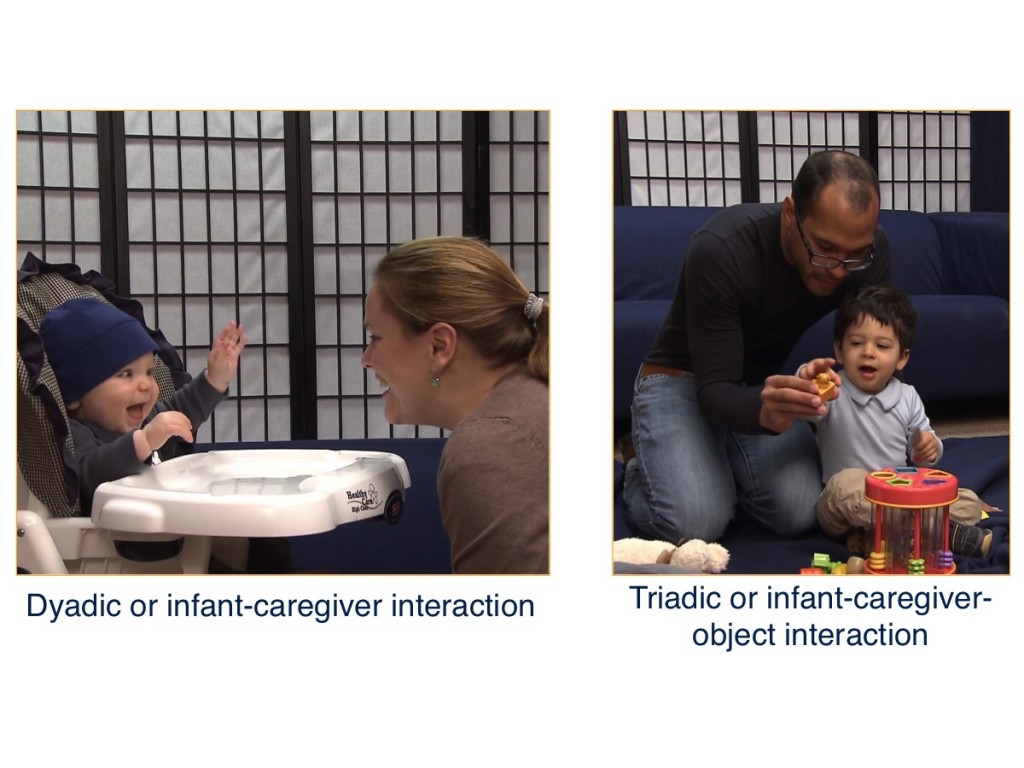
Imagine you are sitting with a friend in a park. Your friend looks down at a friendly puppy. You follow her look. Now you are both sharing attention to the puppy. Sharing attention refers to coordinating attention with a social partner. This skill develops gradually during the first 2 years of life.
In their first days and weeks of life, newborns love to look at faces, especially the eyes. Around 3 months of age, infants engage in dyadic eye contact, or face-to-face eye contact with another person. Through eye gaze, infants and caregivers create a strong emotional connection. This connection helps a baby feel loved and learn about other people.
As infants grow, they build on these dyadic experiences of shared attention and emotions. Between 9 and 12 months of age, they begin to include objects and other people into their experiences. There is a shift from purely dyadic (infant-caregiver) to triadic (infant-caregiver-object) interactions. The ability to share attention between objects and a social partner is called joint attention. Infants can respond to what an adult is paying attention to. They can also share their own interest in objects. This new skill advances children’s language, cognitive, and social development because it offers children new information about their environment.
Infants’ joint attention changes over time during play with others. One study even found that, on average, 18-month-olds spent three times as long looking back and forth between a toy and their mother compared to when they were 12 months old. Coordinated attention doesn’t become a common part of an infant’s day until later in their second year of life.
On the next page, you’ll watch two short video examples of joint attention.
-
- Autism Spectrum Disorder (ASD)
- a developmental disorder that impairs a child’s social and communication skills
- Directing attention
- using eye gaze or a gesture to direct another person’s attention to an object or event
- Following attention
- following another person’s eye gaze or gesture
- Gaze following
- looking at what another person is looking at
- Joint attention
- shared attention between social partners to an object or event